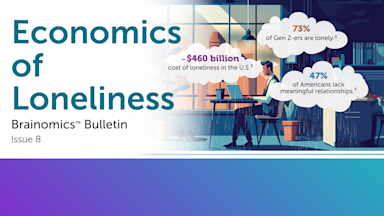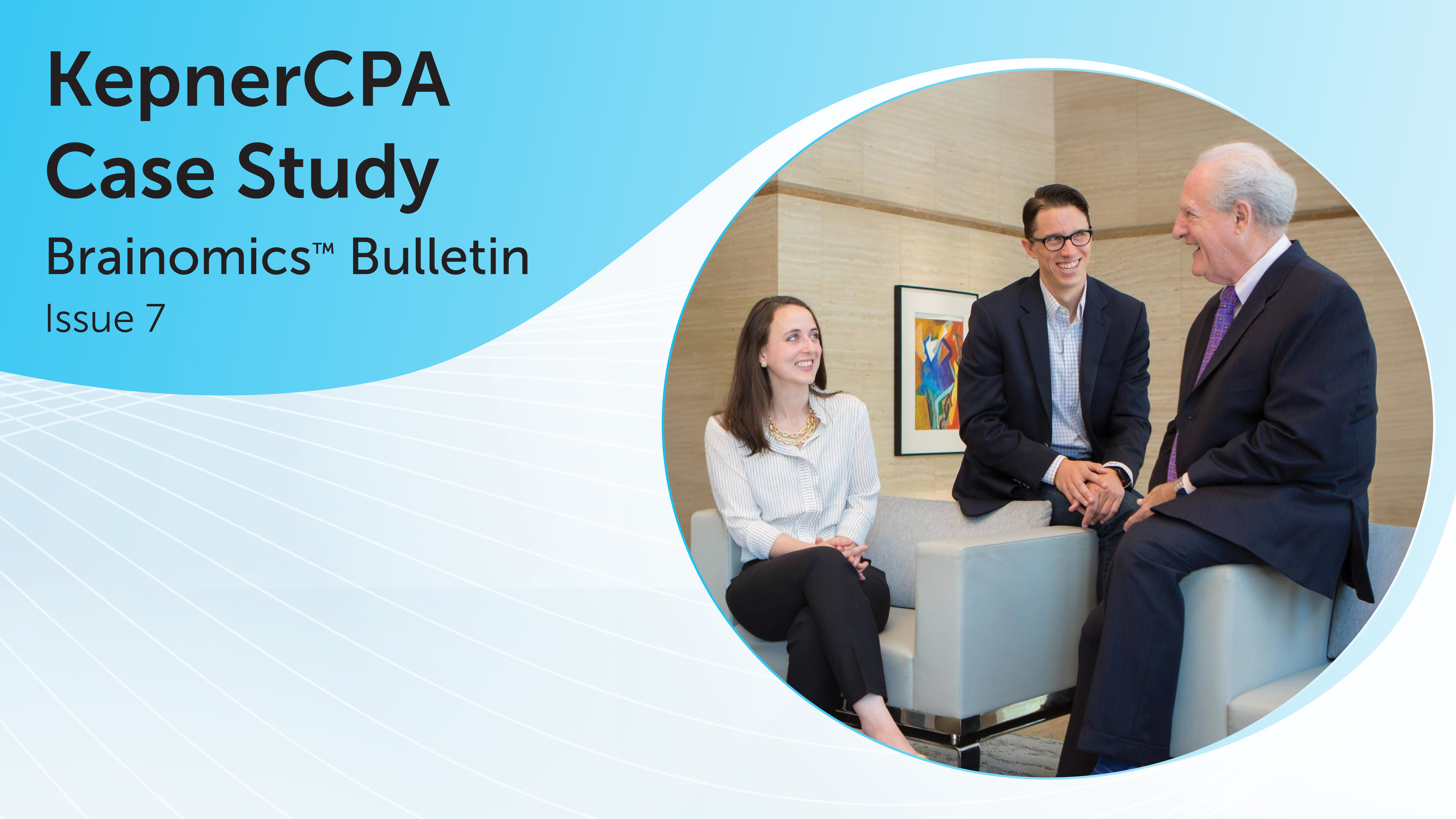Economics of Loneliness
Brainomics Issue 8 Open Printable PDFToday’s topic starts on a sad note ... but ends with hope.
In an increasingly interconnected world, millions of Americans are paradoxically lonely and disconnected from others – the loneliness epidemic is heartbreaking. Neuroscience tells us that loneliness significantly impacts the brain, altering both its function and physical structures. It affects key regions like the prefrontal cortex, amygdala and hippocampus, leading to impaired cognitive functions such as memory, decision-making, and social cognition.1 Chronic loneliness heightens stress and anxiety, associated with abnormal cortisol levels and neuroinflammation, which can damage brain structures. It is also linked to an increased risk of dementia, stroke, hypertension, heart disease and diabetes – translating to huge healthcare costs.2Loneliness associated with old age is a known phenomenon, but surprising recent data shows a higher prevalence of self-reported loneliness among younger adults (i.e., working population) than the elderly.3Loneliness costs the U.S. economy $460 billion – just from absenteeism.3 This estimate falls short of the true cost – the impact on productivity and workforce participation is certainly much bigger. Although loneliness has no single cause – hence no one-size-fits-all solution – employers can create brain-healthy environments. This can include opportunities for social connection through intergenerational and volunteer programs, non-work activities, encouraging in-person communication, fostering shared meaning, and identifying champions to drive actions.4The positive economic impact of these interventions can be measured, which could spur even more employers to act. This is a key research area for the Brainomics® team; if you are interested in taking part, please reach out!Email me to explore a BrainHealthy collaboration, at andrew.nevin@utdallas.edu.
- Lam, J.A. et al. (2021). Neurobiology of Loneliness: A Systematic Review. Neuropsychopharmacol. 46(11), 1873-1887
- CDC. (2024, March). Health Effects of Social Isolation and Loneliness. Centers for Disease Control
- Cigna. (2020). Loneliness and the Workplace: 2020 U.S. Report. Cigna
- British Red Cross. (2023, January). Loneliess at Work: Campaign to End Loneliness. BRC



